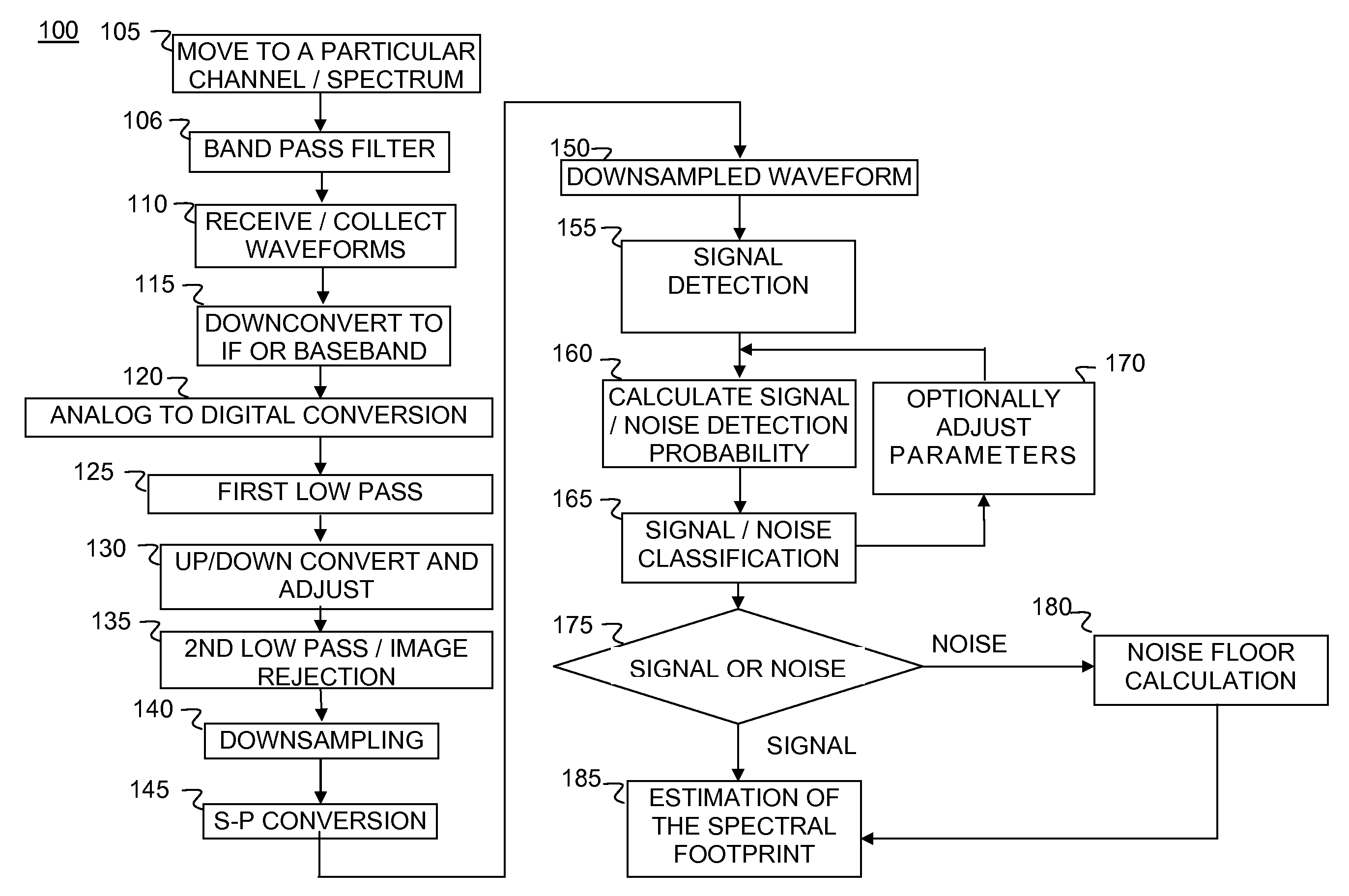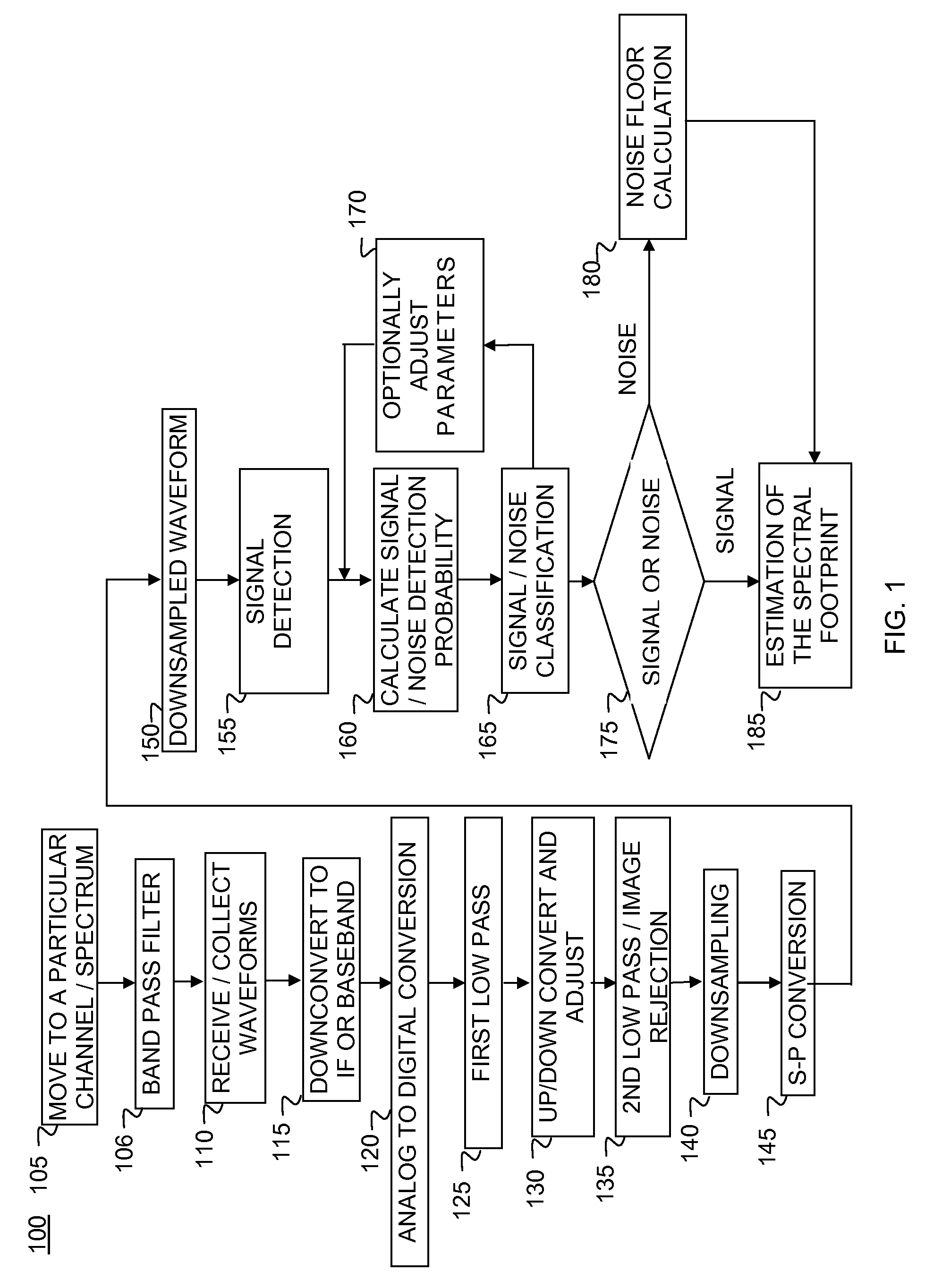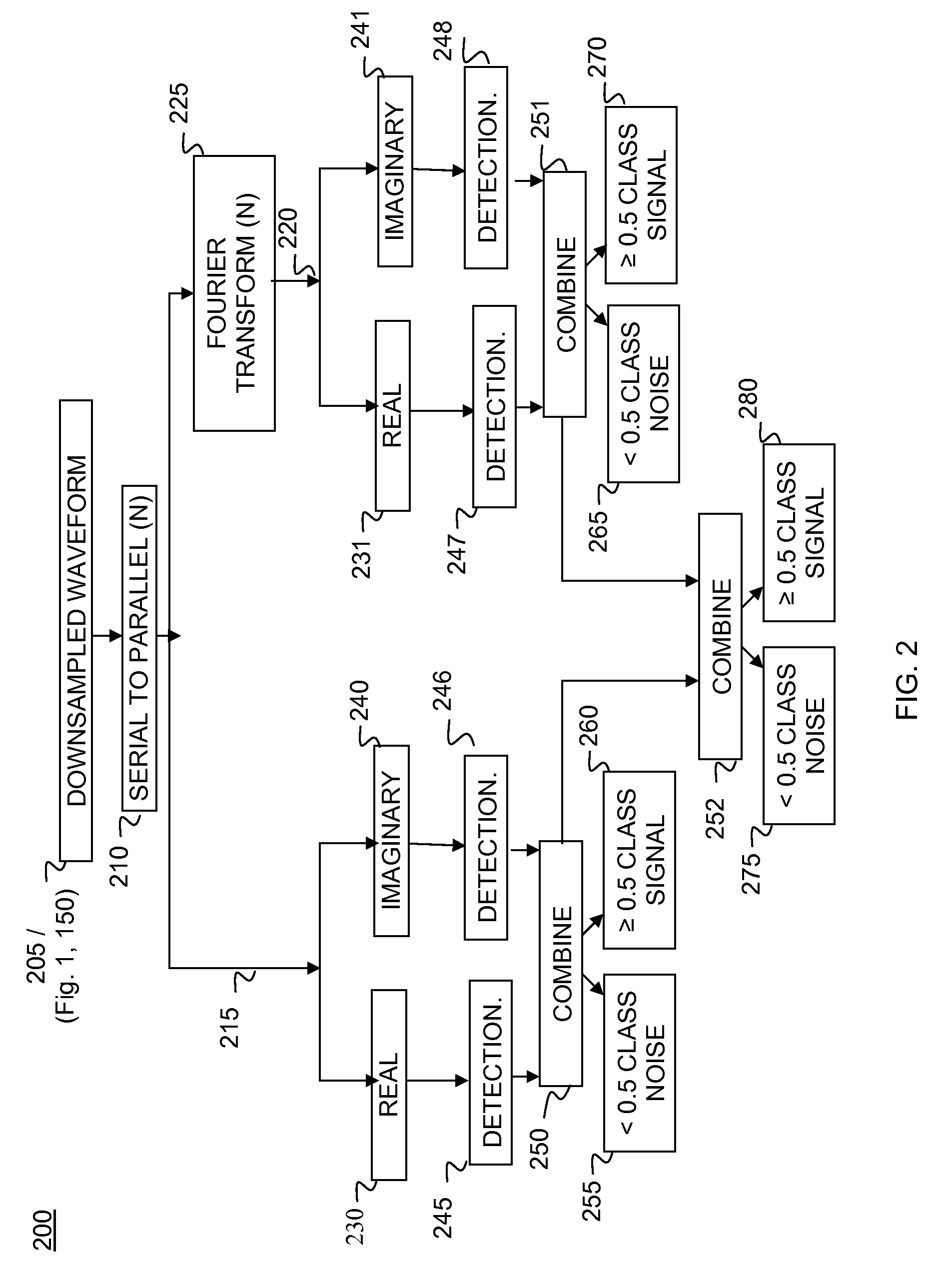Spectrum sensing function for cognitive radio applications
a cognitive radio and spectral sensing technology, applied in the field ofsignal processing, can solve the problems of limiting the application of cognitive radio, underutilized paging frequency, and overcrowded cellular bands, and achieve the effect of low signal to noise ratio (snr) and efficient and simple implementation
- Summary
- Abstract
- Description
- Claims
- Application Information
AI Technical Summary
Benefits of technology
Problems solved by technology
Method used
Image
Examples
Embodiment Construction
I. Higher-Order Statistics as Non-Gaussian Qualifiers
[0039]There are a number of ways in which a useful, information bearing, signal can be detected from additive noise. Some of these methods are: 1) Energy detection, 2) Spectral correlation, 3) Checking for cyclo-stationarity of the received waveform, 4) Use of higher order statistics, etc. As an illustration, we use a higher order statistics based signal detection method here but any of the above techniques may be used.
[0040]It is known that the higher order cumulants for a Gaussian process are zero. Cumulants are defined as the multiplicative coefficients for each term of the Taylor series expansion of the logarithm of the characteristic function. The characteristic function of ψX(ω) of a random variable X is defined as
ψX(ω)=E{exp(jωX)}, (1)
[0041]where j=√{square root over (−1)}. The natural logarithm of the characteristic function is defined as the cumulant generating function
CX(ω)=log {ψX(ω)}, (2)
[0042]or in other words,
exp {...
PUM
 Login to View More
Login to View More Abstract
Description
Claims
Application Information
 Login to View More
Login to View More - R&D
- Intellectual Property
- Life Sciences
- Materials
- Tech Scout
- Unparalleled Data Quality
- Higher Quality Content
- 60% Fewer Hallucinations
Browse by: Latest US Patents, China's latest patents, Technical Efficacy Thesaurus, Application Domain, Technology Topic, Popular Technical Reports.
© 2025 PatSnap. All rights reserved.Legal|Privacy policy|Modern Slavery Act Transparency Statement|Sitemap|About US| Contact US: help@patsnap.com



